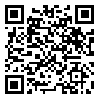Volume 75, Issue 9 (December 2017)
Tehran Univ Med J 2017, 75(9): 675-681 |
Back to browse issues page
Download citation:
BibTeX | RIS | EndNote | Medlars | ProCite | Reference Manager | RefWorks
Send citation to:



BibTeX | RIS | EndNote | Medlars | ProCite | Reference Manager | RefWorks
Send citation to:
Tajiki S, Daie Ghazvini R, Hashemi S J, Zibafar E, Yekaninejad M S, Zareei M et al . Evaluation of Malassezia yeast colonization rate in patients with seborrheic dermatitis. Tehran Univ Med J 2017; 75 (9) :675-681
URL: http://tumj.tums.ac.ir/article-1-8431-en.html
URL: http://tumj.tums.ac.ir/article-1-8431-en.html
Sanaz Tajiki1 
 , Roshanak Daie Ghazvini *
, Roshanak Daie Ghazvini * 
 2, Seyed Jamal Hashemi1
2, Seyed Jamal Hashemi1 
 , Ensieh Zibafar1
, Ensieh Zibafar1 
 , Mir Saeed Yekaninejad3
, Mir Saeed Yekaninejad3 
 , Mahdi Zareei4
, Mahdi Zareei4 
 , Zeinab Borjian Boroujeni1
, Zeinab Borjian Boroujeni1 


 , Roshanak Daie Ghazvini *
, Roshanak Daie Ghazvini * 
 2, Seyed Jamal Hashemi1
2, Seyed Jamal Hashemi1 
 , Ensieh Zibafar1
, Ensieh Zibafar1 
 , Mir Saeed Yekaninejad3
, Mir Saeed Yekaninejad3 
 , Mahdi Zareei4
, Mahdi Zareei4 
 , Zeinab Borjian Boroujeni1
, Zeinab Borjian Boroujeni1 

1- Department of Medical Mycology, School of Public Health, Tehran University of Medical Sciences, Tehran, Iran.
2- Department of Medical Mycology, School of Public Health, Tehran University of Medical Sciences, Tehran, Iran. ,rdaie@tums.ac.ir
3- Department of Epidemiology and Biostatistics, School of Public Health, Tehran University of Medical Sciences, Tehran, Iran.
4- Department of Health, Rescue and Treatment of Iran Police Force, Tehran, Iran.
2- Department of Medical Mycology, School of Public Health, Tehran University of Medical Sciences, Tehran, Iran. ,
3- Department of Epidemiology and Biostatistics, School of Public Health, Tehran University of Medical Sciences, Tehran, Iran.
4- Department of Health, Rescue and Treatment of Iran Police Force, Tehran, Iran.
Abstract: (3571 Views)
Background: Seborrheic dermatitis (SD) is a chronic dermatitis with 1-3% prevalence and even with 33-83% in immunocompromised patients. Often, because of some of predisposing factors, abnormal proliferation of Malassezia yeasts (as a normal flora) is seen in patients that lead to observation of clinical symptoms in their bodies. The aim of this study was to evaluate of Malassezia yeasts colonization rate in patients with seborrheic dermatitis that has key importance to appropriate treatment.
Methods: This descriptive cross-sectional study was carried out during one-year period from January 2015 to February 2016 on 45 patients. According to the sample size formula, after visiting by a dermatologist and refer to the Medical Mycology Laboratory, Tehran University of Medical Sciences, patients were subjected to mycological examinations schedules. After recording the clinical symptoms and their specifications, sampling from all patients’ lesions was performed with sterile scalpel and a piece of scotch tape. Direct smears were prepared with 10% potassium hydroxide as a fungal clearing solution (KOH) and stained with methylene blue. The presence and rate of Malassezia yeast colonization was determined according to the standard procedures by direct microscopic examination.
Results: From a total of 45 under studied patients, 66.7% had moderate to severe colonization of Malassezia yeast. In existence of sweating and stress factors, severe colonization with significant differences was seen (P< 0.05). In 8 cases (17.7%), mycelium form of yeast was observed. The highest mycelium observation was seen in existence of stress with significant differences (P< 0.05).
Conclusion: In most of patients, yeast colonization rate was more than mild status, that emphasize on the etiological role of Malassezia yeasts at least as exacerbating factor in seborrheic dermatitis. On the other hand, the role of factors such as sweating and stress in inducing of severe colonization and invasive form of Malassezia yeasts in SD was confirmed, that should be considered to be treated as well as SD in therapeutic procedure.
Methods: This descriptive cross-sectional study was carried out during one-year period from January 2015 to February 2016 on 45 patients. According to the sample size formula, after visiting by a dermatologist and refer to the Medical Mycology Laboratory, Tehran University of Medical Sciences, patients were subjected to mycological examinations schedules. After recording the clinical symptoms and their specifications, sampling from all patients’ lesions was performed with sterile scalpel and a piece of scotch tape. Direct smears were prepared with 10% potassium hydroxide as a fungal clearing solution (KOH) and stained with methylene blue. The presence and rate of Malassezia yeast colonization was determined according to the standard procedures by direct microscopic examination.
Results: From a total of 45 under studied patients, 66.7% had moderate to severe colonization of Malassezia yeast. In existence of sweating and stress factors, severe colonization with significant differences was seen (P< 0.05). In 8 cases (17.7%), mycelium form of yeast was observed. The highest mycelium observation was seen in existence of stress with significant differences (P< 0.05).
Conclusion: In most of patients, yeast colonization rate was more than mild status, that emphasize on the etiological role of Malassezia yeasts at least as exacerbating factor in seborrheic dermatitis. On the other hand, the role of factors such as sweating and stress in inducing of severe colonization and invasive form of Malassezia yeasts in SD was confirmed, that should be considered to be treated as well as SD in therapeutic procedure.
Type of Study: Original Article |
Send email to the article author
| Rights and permissions | |
 |
This work is licensed under a Creative Commons Attribution-NonCommercial 4.0 International License. |



